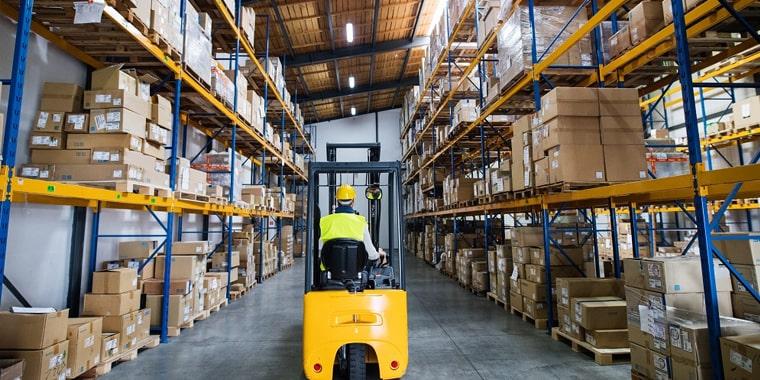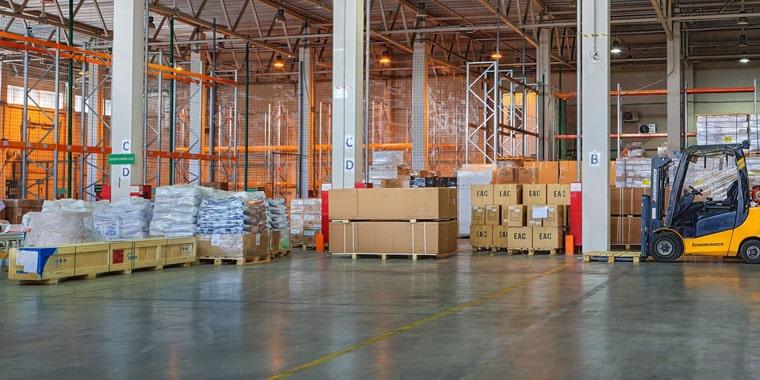
It goes without saying that proper inventory management is crucial for a business – ensuring adequate stocks of raw materials, accessories, equipment, and finished products, and keeping accurate records of your inventory.
With real-time information about your inventory, you will be able to ensure smooth and uninterrupted production and on-time delivery of products to your customers.
Without a proper system to record the inventory of each item, you may get stocked out and production may be hampered, leading to delayed deliveries and dissatisfied customers.
Another huge problem you may face without a proper system for managing your inventory is negative inventory.
ALSO READ: ERP software in Warehouse & Fixed Asset Management

As the name suggests, the term negative inventory means having less than zero stock of that particular item.
Obviously, you cannot actually, in physical terms, have less than zero of an item. It shows up like this in your system because you have a poor system to manage your inventory.
Of course, it’s not impossible to fix this problem – and unfortunately, this gives many companies the excuse to overlook the messy method or system of inventory management; however, it is always better to be proactive and ensure that you don’t find yourself in this situation in the first place.
There are many factors that can cause negative inventory – these factors may not only differ from industry to industry but also from company to company in the same industry. Timing, warehouse location, unclear invoices, multiple warehouses, erroneous recording – and more.
ALSO READ: ERP Software to Enhance your Purchase Management
Let us look in some detail at the reasons for negative inventory:

Timing is quite likely to be the most common reason for the occurrence of negative inventory.
Let’s say that a customer places an order for product A.
You are expecting a fresh batch of the product to complete production and be rolled out from the floor to your warehouse soon, and hence you open a backorder for the product.
You make a sales order for the product, even though inventory shows zero. So here, you will get a negative inventory.
This can be easily fixed, as you can make the requisite adjustments once production is completed.
It is essential to take into consideration scrap, batch tracking, byproducts, and production statistics in the process of manufacturing.
This should be done to verify that actual production and the production records show the same quantitates.
If you create duplicate manufacturing orders or don’t record them properly, you could end up with over or under manufacturing, and this can also cause negative inventory or ghost inventory.
It is crucial that you identify the mistakes in your production process.
ALSO READ: What are the Challenges in ERP Implementation?

Negative balances can also popup when the same type of inventory is maintained at different warehouses and there are multiple location stores.
If sales are recorded from the incorrect store or products are sent to the wrong warehouse, it can cause negative inventory; this can cause some panic and confusion, as it may show a particular warehouse missing X units of a particular product, and another warehouse having X more units of a product than they are supposed to have.
Negative stock at the item level can occur if you want to manufacture a product on made to order basis, only when there is demand.
It can also be caused by backflushing – the process where a manufacturing order is generated and completed after completion of batch production, allowing you to update your inventory levels at present.
ALSO READ: What Are the Different Ways to Improve the Procurement Process?
You may begin with more inventory than is registered in your system, and your picking staff may scan items they have with them, or override the system, mentioning that they are shipping something the inventory system does not show as being present in that location.
Negative inventory is often a picking team error; if you track it, it will enable you to account for the transaction without having to prevent them from fulfilling the order (slowing the process down) or releasing the inventory to be sold to another person (overselling).
ALSO READ: Important ERP Modules and Functions

If this situation continues unchecked for some time, the below-mentioned impacts of negative inventory may cause several problems for your business.
Chiefly, you would be:
How badly can negative inventory impact your business?
It is possible that the next order for the product cannot be completed; this means unhappy customers, as they have to wait till your inventory is restocked with those products.
Most people are not ready to wait – especially if they are generic products that they can get from other companies much quicker.
This means you lose your competitive edge, and that is not a good thing.
Negative inventory balance can also cause serious issues with accounting and render record-keeping erroneous.
ALSO READ: Benefits of ERP for Accounting and Financial Management
You could even end up with too much of a product in stock.
Let us say that there was a delay, and something went wrong with the paperwork, but they could still be on the way to your warehouse.
An employee may place an order for the same item again thinking that there is no stock of that item.
After a couple of days, you may find that you have double the quantity of an item in your inventory, and your holding costs increase.
You may face several issues, and they may impact your business and your profitability, and eventually, customers may lose trust in you.
It is therefore imperative that you avoid the negative balance issue altogether, or take remedial measures to resolve them the moment they pop up.
ALSO READ: Influence and Importance of ERP System in Different Industries

Being proactive and taking the necessary steps to prevent the occurrence of negative inventory balance is a much better policy to have, rather than take corrective measures once it happens.
There are some tips to help you do that.
Identify areas in your process or workflow that could give rise to negative inventory balance, and work out how you can prevent them.
An efficient way is to implement a robust ERP like Tranquil; its inventory management module will help you manage your inventory effectively, and with precision, giving real-time information into your inventory, alerting you to low stock levels, enabling replenishment of essential items so that you can have a smooth and continuous flow of production.
If the negative inventory does happen, investigate what happened, and how?
When and why the problem occurred? Also, identify which items or products are in negative balance and by how much.
Examine all the latest transactions, and you are likely to learn what type of negative inventory you have, and what caused it as well.
Finding the root cause of the problem is an excellent way of ensuring that it doesn’t repeat itself, as you can take the necessary preventive steps.
Check whether it was a problem of timing, location, or production quantity mismatch as we talked about earlier?
Is there a flaw in the manufacturing process? Remember, it could be one of anything or even a combination of factors.
ALSO READ: How ERP Software is Playing Role to Improve Business Productivity?
Ensure that your inventory is accurate, and it is integrated with your e-commerce sites and any other online sales platform you have.
This will significantly lower the risk of customers purchasing or placing orders for items that are not really in stock but appear to be.
Your customers should not get the idea that you have these items in ready stock when you actually don’t and are awaiting a shipment.
The remedial measures that you will need to make to set your inventory back to positive status will depend on the type of negative inventory incurred:
Final Thoughts
It is important that you should be aware of inventory management best practices so that you are able to identify and resolve negative inventory issues in your business.
Removing negative inventory can increase the total inventory available to you for production or sales; however, blind resetting negative balances to zero is not a good idea.
It may give a false impression regarding the availability of inventory, leading you to oversell. It is also possible that other locations have equal amounts of excess inventory caused by picking or receiving mistakes made by your employees at those locations.
If you have multiple warehouses, it is vital that you reconcile inventory using the feature provided in the software and reconcile the inventory counts, or use a cycle count to ensure allocations are updated regarding the inventory level of a specific item, so that your actual overall inventory in hand is not impacted.
Tranquil ERP is an efficient, flexible, and robust ERP system that will help you manage your inventory smoothly and effectively, ensure that there is no negative inventory, help you have the right amount of inventory for your production or sales requirements, and reduce the cost of inventory management eventually.
Are you ready to implement a state-of-the-art ERP solution to ensure efficient inventory management and avoid the pitfalls of negative inventory? If the answer is yes, do schedule a demo at a date and time of your choosing, to see how this works and how we can help you increase your overall efficiency and productivity. Our team will be happy to provide a detailed explanation of all the features and answer any questions you may have.